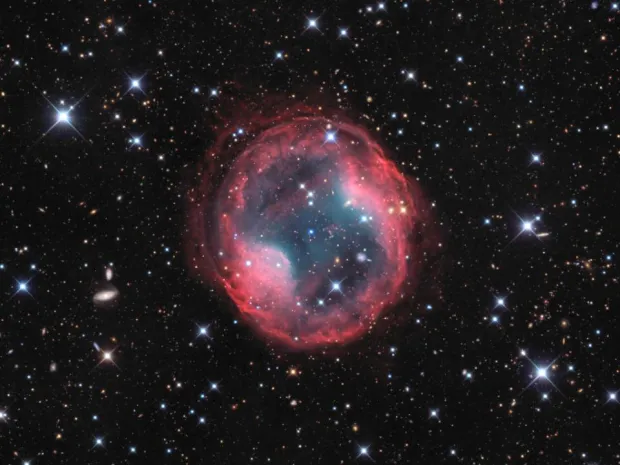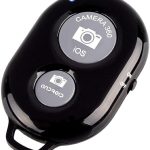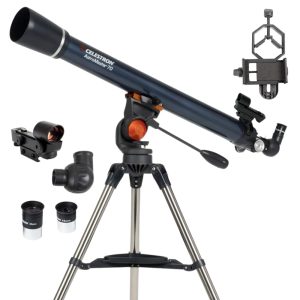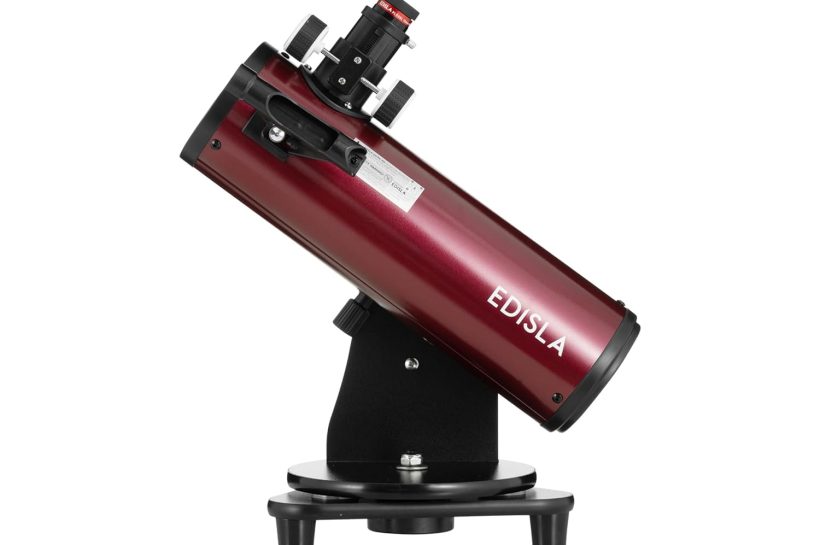Explore, Learn, Achieve: Your Physics Journey Starts Here
Unleash Your Inner Stargazer: Astrophotography on a Budget
Did you know you can capture stunning images of the night sky with smartphone astrophotography? Don’t believe the myth that you need expensive equipment – your backyard and a smartphone are all you need to get started! Unleash your inner stargazer and embark on a thrilling journey through the cosmos with affordable gear.
Myth #1: Fancy Telescopes are Mandatory:
Not true! While telescopes offer more advanced capabilities, even a basic setup can capture stunning celestial shots.
Budget-Friendly Gear for Smartphone Astrophotography :
Tripod: A sturdy tripod like the Amazon Basics Lightweight Tripod (Check Price at Amazon) is crucial for stable, long-exposure shots. Without it, your photos will suffer from camera shake, resulting in blurry and unusable images. Imagine trying to capture the delicate details of the Milky Way with shaky hands – the stars will appear smeared and indistinct.
Smartphone Adapter: This mounts your phone onto the tripod. The Universal Smartphone Tripod Mount Adapter (Check Price at Amazon) offers wide compatibility and secure grip. Holding your phone directly will lead to movement and blurry photos. Imagine trying to photograph a faint nebula – any slight movement will ruin the image, leaving you with nothing but noise and frustration.
Smartphone Lens Kit: Wide-angle and telephoto lenses enhance your shots. The Apexel Optical Phone Camera Lens -12X mm Lens (Check Price in Amazon) provides basic options. Smartphone cameras have limitations when capturing distant objects. A wide-angle lens helps capture expansive celestial landscapes like the Milky Way, while a telephoto lens brings fainter objects like planets and nebulae closer, revealing details you wouldn’t capture with your bare camera. Think trying to photograph Jupiter – without a telephoto lens, it will appear as a tiny, indistinguishable dot.

Myth #2: Professional Cameras are Essential:
While a DSLR offers manual controls and better low-light performance, modern smartphones like the Realme Narzo 60 Pro with 100 MP resolution Camera (Check the Price in Amazon) or Redmi Note 11S Pro with 108 MP Camera (Check the Price in Amazon) have advanced camera technology capable of impressive astrophotographs. Utilize their:
Night Mode: Unlock the hidden wonders of the night sky with your phone! Many smartphones now boast dedicated smartphone astrophotography modes like Night Mode (e.g., Night Sight on Pixel phones), which capture multiple exposures to reduce noise and enhance clarity in low light. Without this feature, your photos will be overwhelmed by noise and grain, hiding the faint details of stars and nebulae leaving you with nothing but digital noise.
Manual Mode (if available): Unleash the full power of your phone for smartphone astrophotography! Experiment with settings like ISO and exposure time for more control over your shots, available in Pro Mode on Samsung devices and with similar features on other phones. This manual control allows you to fine-tune settings for optimal smartphone astrophotography results, capturing faint celestial objects in detail that automatic settings might miss.
Astrophotography Apps: Apps like Astrocam and ProCam offer advanced features like long exposure stacking and star trail creation. These apps unlock advanced techniques beyond basic smartphone capabilities, allowing you to capture stunning star trails and stack multiple exposures to reduce noise and reveal fainter details. Imagine trying to capture a long star trail – without an app, you’ll be limited to single exposures, resulting in a short and incomplete trail.
Getting Started:
- Escape the City Lights: Head to rural areas, national parks, or even your backyard on a moonless night to minimize light pollution and maximize star visibility.
- Set Up Your Gear: Mount your phone securely on the tripod and adjust the height for a comfortable view of the sky.
- Utilize Night Mode or Manual Settings: Experiment with different exposure times (starting from 10-30 seconds) to capture details while avoiding overexposure.
- Stack Your Shots: Use astrophotography apps or online tools like Deep Sky Stacker (free) to stack multiple exposures, significantly reducing noise and improving image quality.
- Edit and Enhance: Use photo editing software like Snapseed (free) or Adobe Lightroom (₹1,235/month) to adjust brightness, contrast, and color balance for a polished final image.
Beyond the Basics:
As you progress on your celestial photography journey, consider these affordable upgrades to unlock even more breathtaking captures.
Capture Fainter Wonders:
Telephoto Lens: Bring distant galaxies, nebulae, and planetary details closer with a dedicated telephoto lens. Options like the APL JS-36X (Check the Price in Amazon) or the PEXEL High Power 36X HD Telephoto Lens (Check the Price in Amazon) offer good magnification. Imagine capturing the swirling arms of the Andromeda Galaxy or the intricate details of the Orion Nebula – a telephoto lens unlocks a whole new realm of possibilities.
Extend Your Exposure:
Intervalometer: Automate long exposure sequences for mesmerizing star trails and time-lapses. Apps like Intervalometer can be used. Imagine capturing the Earth’s rotation reflected in the stars with a stunning star trail, or the movement of planets across the night sky in a time-lapse – an intervalometer opens doors to dynamic celestial storytelling.

Embrace the Deep Sky:
Dobsonian Telescope: For a deeper dive into the cosmos, consider a beginner-friendly Dobsonian telescope. The Orion SkyScanner Dobsonian Telescope (Check for the Price at Amazon) or the Nexstar 130SLT Computerized Telescope (Link for Amazon) offer wide views and affordability. Imagine gazing at globular clusters teeming with stars, or witnessing the majestic rings of Saturn – a Dobsonian telescope opens a window to the wonders of deep-sky objects.
Enhance Your Workflow:
Astrophotography Editing Software: Elevate your post-processing with dedicated software like Deep Sky Stacker (free) for stacking multiple exposures, or Siril (free) for advanced noise reduction and image processing. Imagine transforming your raw captures into vibrant and detailed astrophotographs – specialized software unlocks the full potential of your images.
Remember:
- Research and Learn: Join online communities, follow astrophotographers on social media, and devour tutorials to continuously learn and refine your techniques.
- Experiment and Have Fun: Don’t be afraid to experiment with different settings, techniques, and targets. Astrophotography is a journey of discovery, so enjoy the process!
- Share Your Work: Share your captures with others, inspire fellow stargazers, and contribute to the amazing world of astrophotography.
With dedication, creativity, and these affordable upgrades, your astrophotography journey can reach new heights. So, unleash your inner stargazer, capture the wonders of the cosmos, and share your celestial adventures with the world!











